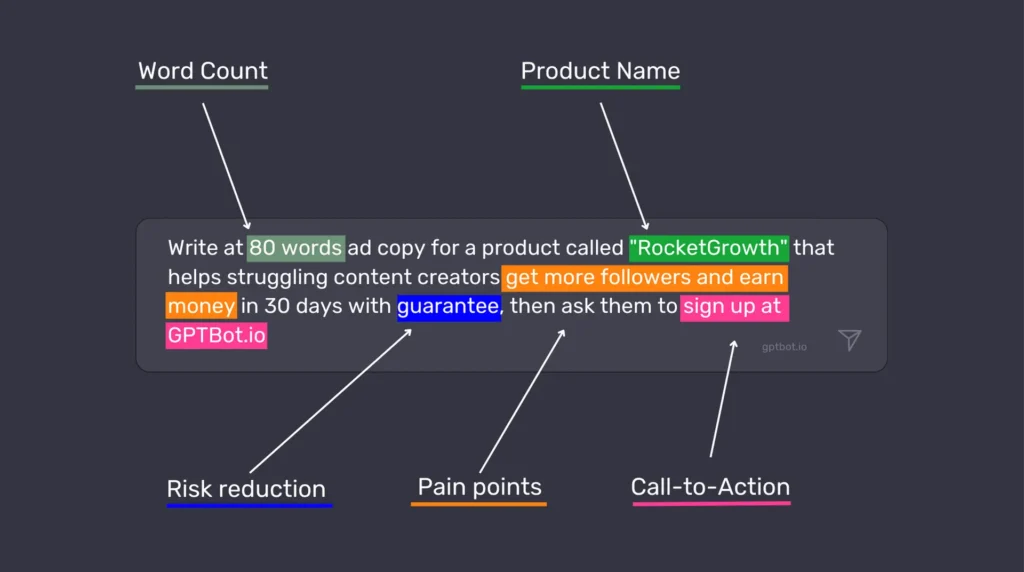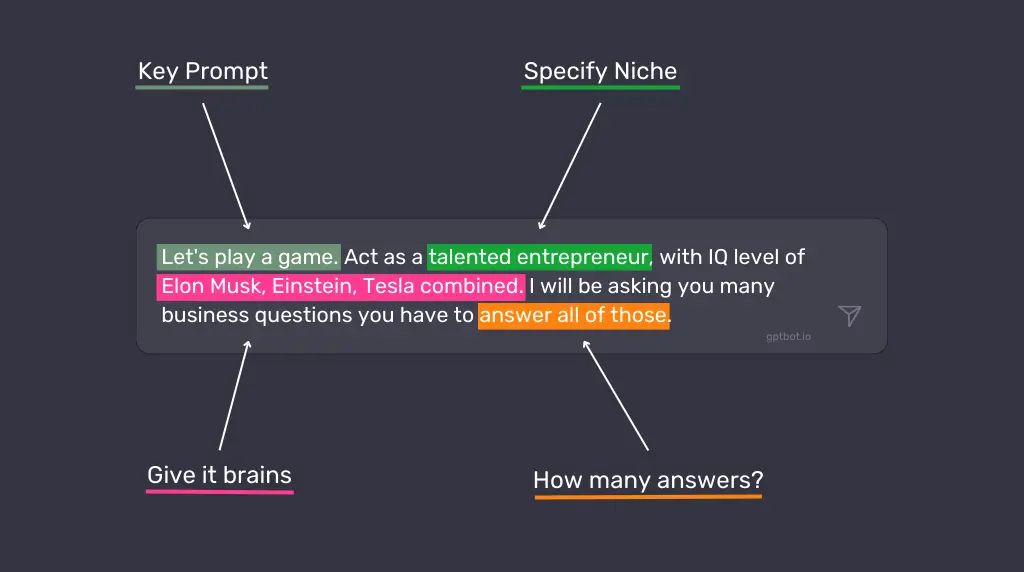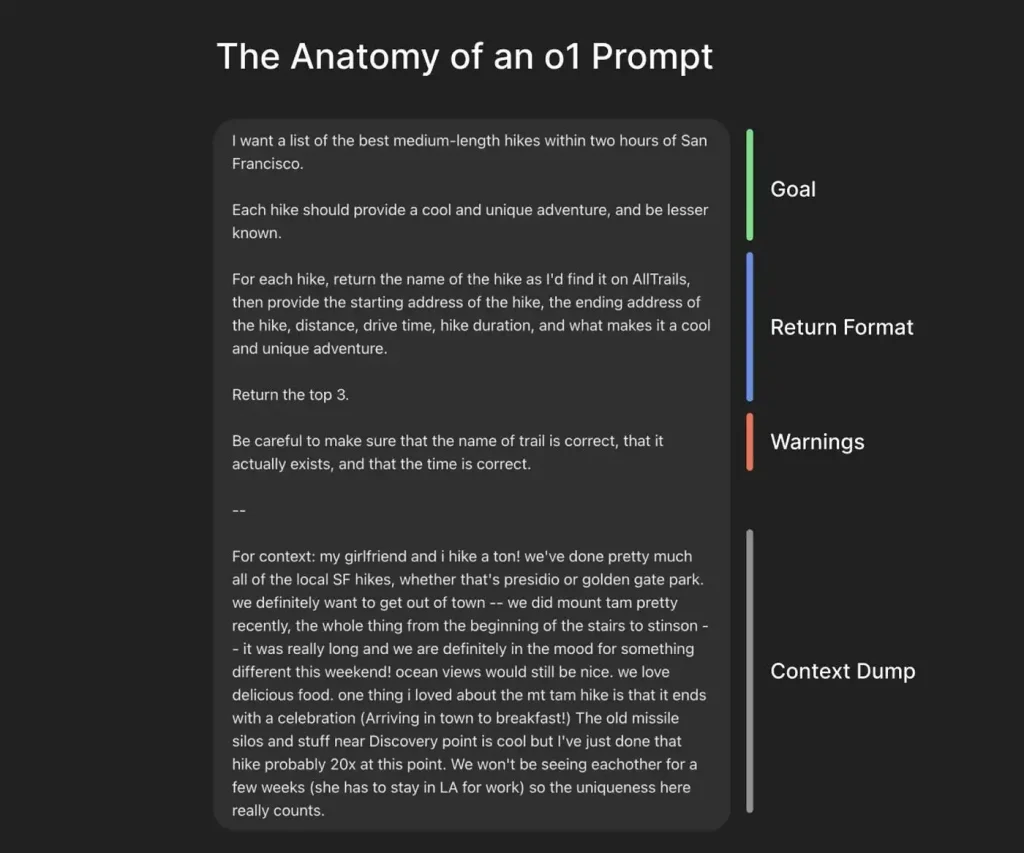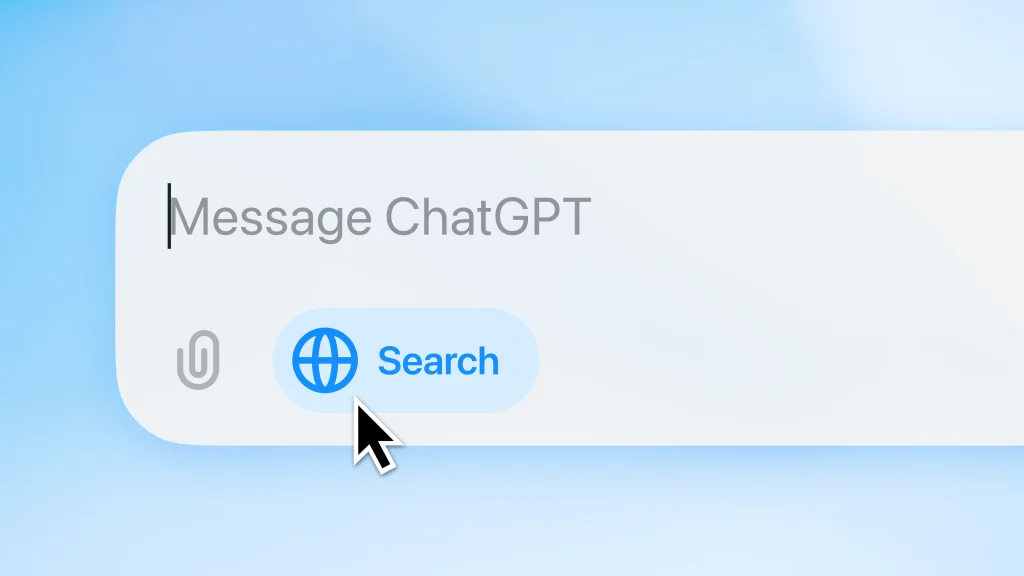I. Introduction
Ever asked ChatGPT something and got a completely different answer than what you wanted? You’re not alone.
We’ve spent countless hours working with ChatGPT, and we’ve learned that the secret to getting great results is not just about what you ask – it’s how you ask it.
ChatGPT is not a mind reader – it’s more like a brilliant but literal friend who needs clear directions. The difference between a generic response and tailored guidance comes down to one thing: your prompt.
Mastering this skill is becoming essential as AI tools integrate into our daily lives. Whether you’re drafting emails, brainstorming ideas, or solving problems, knowing how to communicate with AI saves hours of frustration and strongly improves results.
This regularly updated guide contains the latest techniques for creating prompts that get the responses you actually want. As ChatGPT evolves, we’ll keep refreshing these strategies to ensure you’re always getting the most from this powerful tool.
II. Understanding Prompts
What is a prompt?
A prompt is simply the input you give to ChatGPT – your question, request, instruction, or any text you type before hitting enter. But here’s the thing: a prompt is more than just a question. It’s closer to programming than conversation.
Think about it this way: when you talk to a friend, they have years of context, shared experiences, and human intuition to understand what you mean. They can read your tone, fill in gaps, and make reasonable assumptions about what you’re asking.
ChatGPT doesn’t have any of that. It only has the words you give it, right then and there.
A good prompt acts like a set of instructions that guides the AI toward the type of response you’re looking for. It provides context, parameters, and enough information for the model to understand not just what you’re asking, but how you want it answered.

Why are prompts crucial for effective communication with ChatGPT?
The way you phrase your prompt quite literally shapes the reality that ChatGPT operates in. This is not an exaggeration – it’s how these models work.
Let me give you a quick example. If you ask, “Tell me about dogs,” you’ll get general information about dogs as a species. But if you ask, “I’m thinking about getting a Border Collie for my small apartment in the city. What should I consider?” you’re going to get a much more specific and useful response tailored to your situation.
Effective prompts matter for several reasons:
- They save time by getting you closer to the answer you need on the first try
- They unlock capabilities that aren’t apparent with basic questions
- They help avoid misunderstandings and irrelevant information
- They allow you to tap into the model’s knowledge in much more specific ways
Learning to craft good prompts is like learning to use a search engine effectively – it’s a skill that compounds over time and makes every interaction more valuable.
III. Tips for Crafting Effective Prompts
Be specific with your request
Vague prompts lead to vague answers. It’s as simple as that.
Instead of asking “How can I improve my website?” try something like “What are 5 ways to reduce the bounce rate on my e-commerce website that sells handmade jewelry?”
The more specific you are, the more targeted and useful the response will be.
This means including relevant details like:
- Your goal or the problem you’re trying to solve
- Any constraints or requirements
- The format you want the answer in
- The level of detail you’re looking for
For example, compare these two prompts:
❌ Bad prompt: “Write me an email.”
✅ Good prompt: “Write me a friendly email to a client explaining that their project will be delayed by two weeks due to supply chain issues. Keep it under 200 words and include an offer for a 5% discount on their next order.”
See the difference? The second prompt gives ChatGPT enough guidance to create something genuinely useful without requiring multiple back-and-forth exchanges.
Provide context and background information
ChatGPT doesn’t know anything about you, your business, or your specific situation unless you tell it. Providing context helps the AI understand the bigger picture and tailor its response accordingly.
This might include:
- Who you are and who you’re communicating with
- What you’ve already tried
- Relevant background information
- Industry-specific context
- Your level of expertise in the subject
For instance, if you’re asking for help with a marketing strategy, mentioning that you’re a small business with a limited budget targeting retirees will result in very different advice than if you’re an established brand looking to reach Gen Z.
Think of it this way: you’re not just asking a question, you’re setting a scene that helps ChatGPT understand where you’re coming from and what would be most helpful to you.
Use explicit constraints and guidelines
One of the most powerful techniques for getting great responses is to clearly state any constraints or guidelines you want ChatGPT to follow.
This might include:
- Word count or length requirements
- Tone and style preferences
- Formatting needs
- Complexity level (technical vs. simplified)
- Specific elements to include or exclude
For example: “Explain quantum computing in simple terms a 10-year-old would understand. Use analogies related to everyday objects, keep each paragraph under 3 sentences, and avoid technical jargon completely.“
These constraints act like guardrails that channel ChatGPT’s responses in the direction you want, making it much more likely you’ll get something usable without extensive editing.
Experiment with various phrasings and approaches
ChatGPT is not perfect, and sometimes the way you phrase a question can drastically change the quality of the response. If you’re not happy with an answer, try asking again with different wording.
Some variations to try:
- Change your request from a question to a directive: “Tell me about…” vs. “Explain…”
- Ask for the same information but from different perspectives
- Request the information in a different format (bullet points vs. paragraphs)
- Ask for examples or analogies if a concept isn’t clear
Don’t be afraid to iterate and refine your prompts. Each interaction teaches you a little more about how to communicate effectively with AI, and what works best for your specific needs.
IV. Advanced Hacks and Techniques
System message for context setting
This is where things get really interesting. ChatGPT has a feature called “system messages” that allows you to set the overall context for your conversation. Think of it as setting the stage before the actual dialogue begins.
For example, you might start with: “You are an expert copywriter specialized in writing compelling product descriptions for luxury watches. Your tone is sophisticated yet accessible, and you excel at highlighting the craftsmanship and heritage of timepieces.“
This primes ChatGPT to respond from that specific perspective throughout your conversation, which is incredibly useful for getting consistent, targeted responses.
System messages work best when they:
- Define a clear role or expertise for ChatGPT
- Establish the tone and style you want
- Provide any ongoing constraints or guidelines
- Set expectations for how detailed responses should be

Step-by-step instructions for complex tasks
When you need ChatGPT to perform a complex task, breaking it down into sequential steps can dramatically improve the results.
For example, instead of “Help me create a business plan,” try:
“I need help creating a business plan for my new dog walking service. Please approach this in the following steps:
- First, outline the key sections a basic business plan should include
- Then, ask me questions about my business idea to gather necessary information
- Based on my answers, help me draft each section
- Finally, suggest ways to make the plan more compelling to potential investors“
This approach:
- Makes the task more manageable for both you and the AI
- Ensures important elements aren’t overlooked
- Creates a more interactive and productive conversation
- Often results in more thoughtful, detailed responses
Role-playing for creative scenarios
Getting ChatGPT to adopt a specific persona can unlock creative possibilities and specialized knowledge. This technique is particularly useful for brainstorming, writing, and exploring different perspectives.
Some effective role-prompts include:
- “Act as a skeptical venture capitalist reviewing my business idea. What questions or concerns would you have?”
- “Take on the role of a child psychology expert explaining how to discuss divorce with a 6-year-old.”
- “Respond as if you’re a historical figure from the 1800s encountering modern technology for the first time.”
- “Play the role of a UX research director evaluating my app prototype. Based on these user testing results [results], identify the three most critical usability issues, explain how they might impact our core metrics (retention, engagement, conversion), and outline a research plan to validate potential solutions. Your response should balance immediate fixes with longer-term strategic improvements.”
- “Assume you’re a financial advisor who specializes in helping creative professionals plan for irregular income streams. I’m a freelance photographer making between $45,000-70,000 annually, with significant seasonal fluctuations. I have $15,000 in credit card debt, $5,000 in savings, and need to establish both an emergency fund and retirement planning. Create a month-by-month financial roadmap for my next year that accounts for income uncertainty while making meaningful progress toward financial stability.”
This approach helps ChatGPT generate more authentic and nuanced responses that reflect particular viewpoints or expertise. Just remember that while the AI can simulate different perspectives, it’s still drawing on patterns in its training data rather than actual experience.
The power of iterations and refining responses
Sometimes the best approach is an iterative one.
Start with a basic prompt, evaluate the response, and then build on it with follow-up prompts that refine and improve the output.
For example:
- Initial prompt: “Write a product description for my new organic shampoo.”
- After receiving the response: “This is good, but can you make it more emotional and emphasize the sustainable packaging?”
- Then: “Now add a section about how it’s suitable for all hair types.”
This back-and-forth process:
- Allows you to guide the development of complex content
- Helps you discover what aspects need more attention
- Often results in higher quality final output than trying to get everything perfect in a single prompt
- Mimics the natural collaborative process you might have with a human assistant
InstructGPT: Asking ChatGPT to think step by step
One of the most powerful techniques for complex problems is to explicitly ask ChatGPT to work through its reasoning process step by step. This approach, sometimes called “chain-of-thought prompting,” can lead to more accurate and thorough responses.
For example: “Solve this math problem, explaining your thought process at each step: If a store offers a ‘buy 2, get 1 free’ promotion, and each item costs $15, how much would you pay for 7 items?”
By instructing ChatGPT to show its work:
- You can spot potential errors in reasoning
- The AI tends to be more careful and methodical
- You get insight into how the answer was derived
- The response becomes educational as well as informative
This technique is particularly valuable for math problems, logical reasoning, coding tasks, and any situation where the process matters as much as the final answer.
The anatomy of an effective prompt (by OpenAI’s co-founder)
OpenAI co-founder Greg Brockman recently shared an excellent breakdown of what he calls an “o1 prompt” – a highly effective prompt structure that consistently delivers quality outputs, especially when using ChatGPT’s o1 model.
As shown in his example, the best prompts typically contain 4 key components:
- A clear goal statement
- Specific return format instructions
- Important warnings or constraints
- Relevant context

Notice how the hiking prompt begins with the precise request, then adds specific requirements about the type of hikes wanted, followed by exactly how the information should be structured, potential pitfalls to avoid, and finally personal context that helps tailor the response.
This structured approach eliminates ambiguity and gives ChatGPT all the information it needs to deliver a highly personalized, useful response.
V. Avoiding Common Pitfalls
Being too vague or open-ended
One of the biggest mistakes people make is asking questions that are so broad or vague that ChatGPT has to guess what you want. Questions like “Tell me about marketing” or “How do I get better at my job?” give the AI too much room to interpret.
When your prompt is vague:
- The response will likely be generic and surface-level
- You’ll probably need to ask multiple follow-up questions
- You might get information that’s not relevant to your actual needs
Instead, take a moment to think about what specific aspect of the topic you’re interested in, and what you plan to do with the information. Then craft your prompt accordingly.
Overloading the prompt with information
While context is important, there’s such a thing as too much information. Extremely long prompts with excessive details can confuse the model or cause it to focus on the wrong aspects of your request.
Signs you might be overloading your prompts:
- ChatGPT seems to ignore important parts of your request
- Responses address only the first or last portion of your prompt
- The AI seems confused or asks for clarification
Aim for a balance – include relevant details but be concise. If you have a lot of information to share, consider breaking it up into a more conversational exchange rather than one massive prompt.
Misinterpreting output as factual information
This is not so much a prompt issue as a usage issue, but it’s critical: ChatGPT is not a search engine or database. It generates responses based on patterns in its training data, which means it can produce plausible-sounding but incorrect information.
When using ChatGPT:
- Be skeptical of specific facts, figures, dates, and quotes
- Verify important information with reliable sources
- Use the AI for idea generation and drafting rather than as the final authority
- Be especially careful with technical, medical, legal, or financial information
You can mitigate this somewhat by asking ChatGPT to cite sources or indicate when it’s unsure, but remember that even these citations need verification.
UPDATE: Since October 2024, ChatGPT has introduced ChatGPT Search, which delivers updated, live information – addressing one of the biggest limitations of the original version.
This feature allows ChatGPT to access current information from the web, making it more useful for questions about recent events, new products, or evolving topics.
This is a game-changer because previously, ChatGPT was limited to information it learned during training. Now it can provide more timely and accurate responses to questions about current events and developments.

VI. Real-life ChatGPT Examples and Case Studies
Analyzing successful prompts
Let’s look at some examples of prompts that work particularly well, and understand why.
Example 1: Writing Assistant
❌ Poor prompt: “Help me write better.”
✅ Effective prompt: “I’m writing a cold email to potential clients for my graphic design services. My target audience is small business owners in the food industry. Write an email template that highlights the importance of strong branding, keeps the tone friendly but professional, and includes a clear call to action. The email should be around 200 words.”
Why it works: This prompt provides specific context (cold email, graphic design services), identifies the audience (small business owners in food industry), gives clear parameters (tone, length, elements to include), and has a defined purpose.
Example 2: Research Help
❌ Poor prompt: “Tell me about climate change.”
✅ Effective prompt: “I’m preparing a 10-minute presentation for high school students about climate change. Can you help me create an outline that covers the basic science, three major impacts, and two actionable steps students can take? Please keep the language simple but not condescending, and include one surprising fact or statistic for each section to maintain interest.”
Why it works: This specifies the audience (high school students), format (10-minute presentation), exact structure needed (science, impacts, actions), tone requirements (simple but not condescending), and even includes a specific request for engaging elements (surprising facts).
Lessons learned from ineffective prompts
We can learn just as much from analyzing prompts that didn’t work well:
Example 1: The E-commerce Strategist
❌ Ineffective prompt: “Help me increase my online sales.”
Problem: No information about the business type, current situation, target market, or specific challenges. It’s impossible to provide tailored, actionable advice.
✅ Improved version: “I run a small online boutique selling handmade leather accessories with average monthly sales of $3,000. Our conversion rate has dropped from 3.2% to 1.7% over the last quarter despite steady traffic. Our target audience is professionals aged 30-45 who value quality and craftsmanship. Can you suggest 5 specific strategies to improve our product page conversion rate, focusing on elements we could implement before the holiday shopping season begins?”
Example 2: The Content Creator
❌ Ineffective prompt: “Write me an article about leadership.”
Problem: No indication of length, style, audience, purpose, or specific aspects of leadership to focus on.
✅ Improved version: “Write me a 700-word article about servant leadership for my company blog. The audience is middle managers in the tech industry. Focus on practical ways to implement servant leadership principles in day-to-day team management. Use a conversational tone with 2-3 real-world examples, and include a brief introduction explaining what servant leadership is.”
The key lessons from these examples:
- Include all relevant information in your initial prompt
- Specify format, length, and style requirements
- Identify your audience and purpose
- Break complex requests into clear components
- When appropriate, provide examples of what you’re looking for
VII. Conclusion
Recap of key points and takeaways
We’ve covered a lot of ground in this guide to mastering ChatGPT prompts.
Here are the essential takeaways:
- Prompts are instructions that guide ChatGPT toward the type of response you want
- Specificity is your friend – vague prompts lead to vague responses
- Context matters – ChatGPT doesn’t know anything about you or your situation unless you tell it
- Constraints and guidelines help channel the AI’s responses in useful directions
- Advanced techniques like system messages, role-playing, and step-by-step instructions can dramatically improve results
- Iteration is often the best approach for complex tasks
- Always verify factual information from ChatGPT with reliable sources
The difference between a basic user and a power user often comes down to prompt crafting skills. With practice, you’ll develop an intuition for how to phrase your requests to get the most helpful, relevant responses.
Encouragement to experiment and learn through practice
The best way to get better at crafting prompts is simple: practice.
ChatGPT is remarkably forgiving – there’s no penalty for trying, adjusting, and trying again. Each interaction is an opportunity to refine your approach.
Start by taking a prompt you’ve used before and asking yourself:
- How could I make this more specific?
- What context might help ChatGPT better understand what I need?
- Are there constraints or guidelines that would improve the response?
Then experiment with different variations and see what works best. Pay attention to which prompts generate the most useful responses, and look for patterns you can apply to future interactions.
Remember, effective prompt crafting is not just about getting better responses from ChatGPT – it’s about learning to communicate your needs clearly and specifically, a skill that has value far beyond AI interactions.
So go ahead, start experimenting, and watch as your AI conversations transform from basic Q&A to truly valuable exchanges that save you time and generate insights you might not have discovered on your own. Your prompt is powerful, use it wisely!

![Master AI Vibe Coding in 10 Steps [2025 Guide + Tools]](/_next/image?url=https%3A%2F%2Fcms.gptbot.io%2Fwp-content%2Fuploads%2F2025%2F05%2Fvibe-coding-guide-tips.webp&w=3840&q=75)


